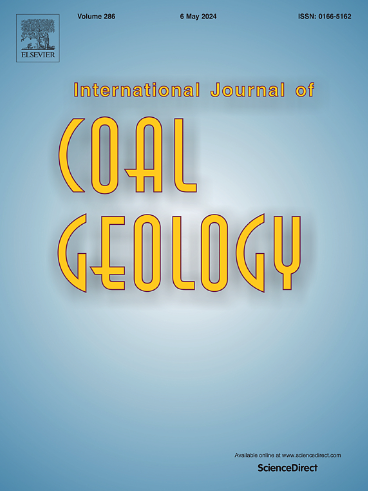Chemistry imaging and distribution analysis of rare earth elements in coal using LIBS and LA-ICP-MS instruments
IF 5.7
2区 工程技术
Q2 ENERGY & FUELS
引用次数: 0
Abstract
Currently, demand for rare earth elements (REEs) increased significantly. Coal is actively evaluated as potential economic sources for extraction of REEs. In this work, laser-induced breakdown spectroscopy (LIBS) was evaluated for rapid estimation of REEs content and their distribution in the natural coal samples. The results were compared with similar laser ablation–inductively coupled plasma–mass spectrometry (LA-ICP-MS) measurements. Thirteen coal samples (nine standard samples and five natural samples) were used in this study. Powder samples were pressed into pellets while coal chunks were directly ablated for data recording. Pellets of the powder standard samples were used to optimize the data acquisition system and then data recorded with this optimized system was used to identify the proper data acquisition and analysis models. After establishing the proper data acquisition system and analysis model using the standard samples, natural coal samples in powder form and their chunks were utilized to record LIBS and LA-ICP-MS spectra. Multivariate calibration models were developed using four of the natural samples, which were evaluated by predicting the REE content in the fifth sample. Principal component analysis was performed on the LIBS data obtained from the natural samples and it classified all the samples with high accuracy. Two-dimensional (2D) elemental mapping on coal chunk samples was also performed using both LIBS and LA-ICP-MS to study the distribution of REEs in the samples. The resulting elemental images and their correlations can be used to infer mineral distributions.

利用LIBS和LA-ICP-MS对煤中稀土元素进行化学成像和分布分析
目前,对稀土元素(ree)的需求显著增加。煤炭作为稀土开采的潜在经济来源得到了积极评价。本文采用激光诱导击穿光谱(LIBS)技术对天然煤样品中稀土元素的含量及其分布进行了快速估计。结果与类似的激光烧蚀-电感耦合等离子体质谱(LA-ICP-MS)测量结果进行了比较。本研究共使用了13个煤炭样本(9个标准样本和5个自然样本)。粉末样品压成球团,煤块直接烧蚀进行数据记录。利用粉末标准样品的球团对数据采集系统进行优化,并利用优化后的系统记录的数据确定合适的数据采集和分析模型。利用标准样品建立相应的数据采集系统和分析模型后,利用粉状天然煤及其块状天然煤进行LIBS和LA-ICP-MS谱的记录。利用4个天然样品建立了多变量校准模型,并通过预测第5个样品的稀土元素含量进行了评估。对从自然样品中获得的LIBS数据进行主成分分析,并对所有样品进行了高准确率的分类。利用LIBS和LA-ICP-MS对煤块样品进行二维(2D)元素映射,研究样品中稀土元素的分布。由此产生的元素图像及其相关性可用于推断矿物分布。
本文章由计算机程序翻译,如有差异,请以英文原文为准。
求助全文
约1分钟内获得全文
求助全文
来源期刊

International Journal of Coal Geology
工程技术-地球科学综合
CiteScore
11.00
自引率
14.30%
发文量
145
审稿时长
38 days
期刊介绍:
The International Journal of Coal Geology deals with fundamental and applied aspects of the geology and petrology of coal, oil/gas source rocks and shale gas resources. The journal aims to advance the exploration, exploitation and utilization of these resources, and to stimulate environmental awareness as well as advancement of engineering for effective resource management.
 求助内容:
求助内容: 应助结果提醒方式:
应助结果提醒方式:


